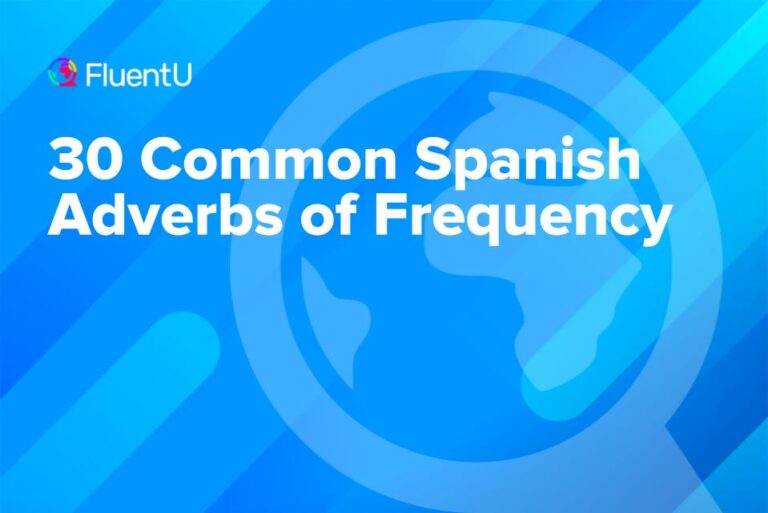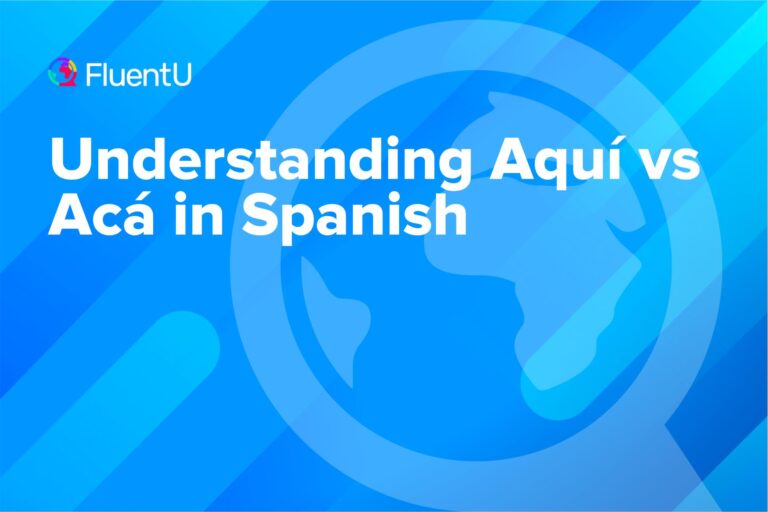How to Make Comparisons in Spanish

You have to know how to make comparisons in Spanish to make decisions.
Should you move to Spain or Argentina? Would you rather eat churros and chocolate or dulce de leche ice cream?
With this blog post, learn the nine Spanish comparative phrases, how to make comparisons correctly, as well as ways to practice.
Download: This blog post is available as a convenient and portable PDF that you can take anywhere. Click here to get a copy. (Download)
How to Use Spanish Comparatives of Inequality
Más/menos + adjective + que
Meaning: more/less than
This phrase is used when you want to say one thing is more or less than another.
The first way you can use this formula is with adjectives. This means “someone is more/less (adjective) than someone else.”
Jose es más alto que Ana.
(Jose is taller than Ana.)
Argentina es más grande que España.
(Argentina is bigger than Spain.)
Más/menos + adverb + que
Meaning: “more/less than [action]”
This phrase is used to describe differences in how something is done.
This phrase needs the help of an adverb, which is a word that ends in -mente in Spanish (or, -ly in English).
Ella escribe más lentamente que nosotros.
(She writes slower than we do.)
Yo hablo más rápidamente que Juan.
(I talk faster than Juan.)
Jorge canta más ruidosamente que yo.
(Jorge sings louder than me).
It’s also important to note that just like in English, some adverbs in Spanish have an irregular form in spoken language.
Corro rápidamente → Corro rápido
(I run fast)
Camino lentamente → Camino lento
(I walk slow)
Bailas increíblemente → Bailas increíble
(You’re a great dancer/You dance great)
Más/menos + noun + que
Meaning: “more/less of something than”
This phrase is used to express that someone has more of something than someone else.
Juan tiene más autos que Josefina.
(Juan has more cars than Josefina.)
Tengo menos libros que Juan.
(I have fewer books than Juan.)
Más/menos + de
Meaning: “more/less than [number]”
This phrase is used to describe the amount of something.
Esa camisa cuesta más de $20.
(That shirt costs more than $20.)
Quedan menos de diez galletas.
(There are fewer than 10 cookies left.)
The exception to this is when you’re saying you don’t have a certain number of something as a negative. In this situation, you use que to essentially mean “no more than [number].”
No tengo más que diez dólares.
(I only have 10 dollars. / I have no more than 10 dollars.)
Ella no tiene más que un hijo.
(She only has one son. / She has no more than one son.)
How to Use Superlatives in Spanish
El/la/lo + más/menos
Meaning: “the most/the least”
This phrase describes something that is the most or the least.
Spanish uses the pronouns lo and la when you’re not using the noun directly. So el/la/lo más means “the most” and el/la/lo menos means “the least.”
Esta frase es la más útil de todas.
(This sentence is the most helpful of all.)
Él es el menos alborotador de la clase.
(He’s the least disruptive in the class.)
Lo más gracioso de la película fue la canción del villano.
(The funniest [part] of the movie was the villain’s song.)
El/la + noun + más/menos + adjective + de
Meaning: “the most/the least”
This phrase describes something or someone that is the most or least of something.
When you’re not replacing the noun, you can use the regular definite articles el and la followed by más/menos.
By adding de, it’s like saying “the most” or “the least” of something.
Él es el chico más lindo de la escuela.
(He is the best-looking boy in school.)
Ella es la jugadora más rápida del equipo.
(She is the fastest player on the team.)
El/la + mejor/peor
Meaning: “the best/the worst”
This phrase is used to describe someone or something that is the best or worst.
Two extremely useful superlatives you’ll definitely need are:
el/la mejor; los/las mejores (pl.) — the best
el/la peor; los/las peores (pl.) — the worst
De todos estos libros, este es el mejor.
(Of all these books, this is the best [one].)
Gracias, Karen, eres la mejor.
(Thanks, Karen, you’re the best [one].)
Sometimes, you’ll see the article lo used before mejor or peor.
This is because lo is used with uncountable nouns to mean “the best/worst thing,” while el/la have the same function, but for countable nouns, as in “the best/worst one.”
Comer cuando uno tiene hambre es lo mejor.
(Eating when you’re hungry is the best [thing]).
La lluvia es lo peor.
(The rain is the worst [thing]).
As you can see, you can’t count rain or eating, which is why we have to use lo instead of el or la.
How to Use Spanish Comparisons of Equality
Not sure who’s better looking? Are those two restaurants more or less the same? You might want to use comparisons of equality.
Tan + adjective/adverb + como
Meaning: “as/as”
This phrase is used to describe the equality of two things (or people).
Ella es tan linda como su hermana.
(She is as beautiful as her sister.)
Juan es tan rico como Josefina.
(Juan is just as rich as Josefina.)
El tiempo está tan lluvioso hoy como ayer.
(The weather is as rainy today as yesterday.)
No puedo comer tan rápido como tú.
(I can’t eat as fast as you.)
Tanto + noun + como
Meaning: “as much as”
Use this phrase to say two things are equal.
The only tricky thing to remember here is to make sure that tanto/a agrees with your noun, so it needs to be either masculine or feminine, and singular or plural.
Josefina tiene tantos libros como Juan.
(Josefina has as many books as Juan).
Hay tanta lluvia hoy como ayer.
(There is as much rain today as yesterday.)
Elisa comió tantas hamburguesas como Luis.
(Elisa ate as many hamburgers as Luis.)
For verbs, you don’t need to worry about making anything agree. You can just use verb + tanto + como.
Yo entiendo tanto como ella.
(I understand as much as she does.)
Other Expressions to Make Comparisons in Spanish
Other ways to make comparisons of inequality are to use various descriptive phrases.
Son muy differentes
(They are very different)
Son opuestos
(They are the opposite)
No se los puede comparar
(They can’t be compared)
To say things are the same and avoid all the tanto malarkey, you can simply say:
Son iguales
(They’re the same)
Son lo mismo
(They’re the same)
Son más o menos lo mismo
(They’re more or less the same)
Of course, using these last few expressions won’t give you the chance to show off your Spanish, but they may be useful to end a particularly tiresome debate about which Netflix series is better, which restaurant serves the best type of fries or which flavor of candy is the tastiest.
How to Get Solid Spanish Comparisons Practice
- Press “play” on fun videos. Watching TV and seeking out content on YouTube are great ways of picking up comparisons. Watching with the subtitles off is a great additional challenge because you’ll need to pay close attention and you can hone your listening skills at the same time.
- Read like you mean it. Reading in Spanish gets a lot of press as a way to expand vocabulary, but it’s also great for learning grammar—including comparisons. Regardless of whether or not you’re already reading Spanish regularly, the next time you pick up a Spanish book, you can use it to learn about making comparisons.
- Listen to popular music. Find a few songs that use comparisons and start learning the lyrics. Spend some quality time listening to songs in Spanish—whether it’s on your car radio or via streaming—and if you hear a comparison, go ahead and look up the lyrics. Try committing the verse to memory or the whole song if you want to.
- Find fresh ways to compare daily. Once you’ve heard, read and sung enough comparisons to get the hang of them, try writing and then rewriting some comparisons of your own.
- Immerse yourself in Spanish. If you can’t go to a Spanish-speaking country, you can do this easily online with a program like FluentU.
FluentU takes authentic videos—like music videos, movie trailers, news and inspiring talks—and turns them into personalized language learning lessons.
You can try FluentU for free for 2 weeks. Check out the website or download the iOS app or Android app.
P.S. Click here to take advantage of our current sale! (Expires at the end of this month)

- Take online quizzes. Many sites offer practice quizzes for Spanish comparisons, such as this one from SpanishDict, this comparisons of inequality quiz and this comparisons of equality quiz from StudySpanish.com.
So should you move to Argentina or Spain?
Well, we couldn’t possibly say—though we can tell you what the differences are between the Spanish in both countries.
Now, you can weigh the pros and cons of the two countries—along with anything else you want to compare—on your own.
Download: This blog post is available as a convenient and portable PDF that you can take anywhere. Click here to get a copy. (Download)
And One More Thing…
If you've made it this far that means you probably enjoy learning Spanish with engaging material and will then love FluentU.
Other sites use scripted content. FluentU uses a natural approach that helps you ease into the Spanish language and culture over time. You’ll learn Spanish as it’s actually spoken by real people.
FluentU has a wide variety of videos, as you can see here:

FluentU brings native videos within reach with interactive transcripts. You can tap on any word to look it up instantly. Every definition has examples that have been written to help you understand how the word is used. If you see an interesting word you don’t know, you can add it to a vocab list.

Review a complete interactive transcript under the Dialogue tab, and find words and phrases listed under Vocab.

Learn all the vocabulary in any video with FluentU’s robust learning engine. Swipe left or right to see more examples of the word you’re on.

The best part is that FluentU keeps track of the vocabulary that you’re learning, and gives you extra practice with difficult words. It'll even remind you when it’s time to review what you’ve learned. Every learner has a truly personalized experience, even if they’re learning with the same video.
Start using the FluentU website on your computer or tablet or, better yet, download the FluentU app from the iTunes or Google Play store. Click here to take advantage of our current sale! (Expires at the end of this month.)









